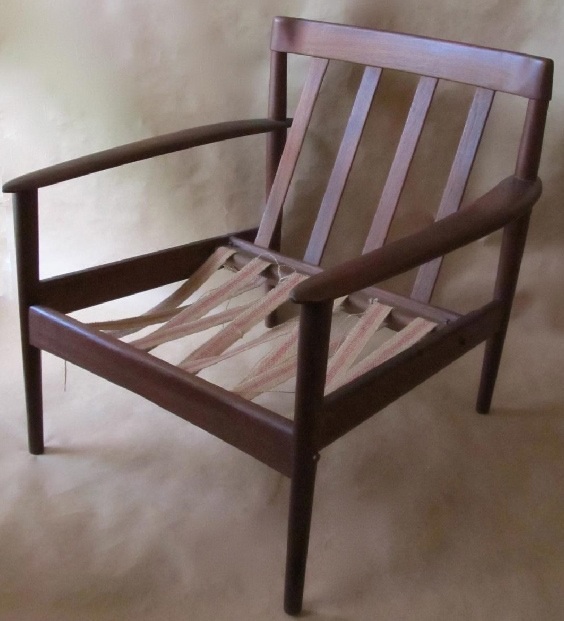 This beautiful teak armchair by Danish designer Grete Jalk is the one you don’t see so often. I got it with no cushions and the webbing redone kind of incorrectly.
This beautiful teak armchair by Danish designer Grete Jalk is the one you don’t see so often. I got it with no cushions and the webbing redone kind of incorrectly.
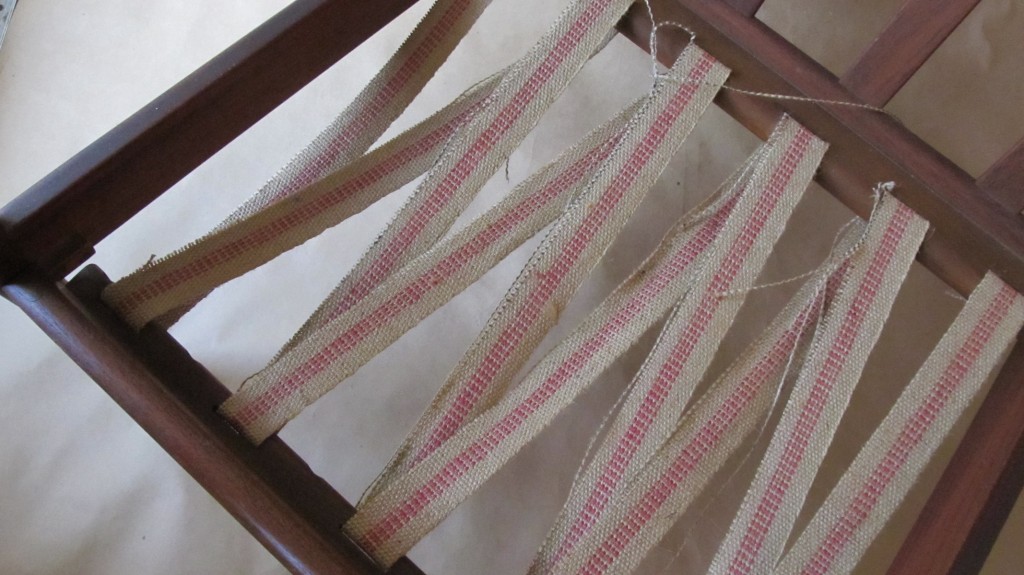 The zig-zag weave pattern looks a little odd but it is correct. What’s incorrect is the use of jute webbing that was cut lengthwise to the suitable width but that left it with fraying edges. The original webbing was an extruded vinyl.
The zig-zag weave pattern looks a little odd but it is correct. What’s incorrect is the use of jute webbing that was cut lengthwise to the suitable width but that left it with fraying edges. The original webbing was an extruded vinyl.
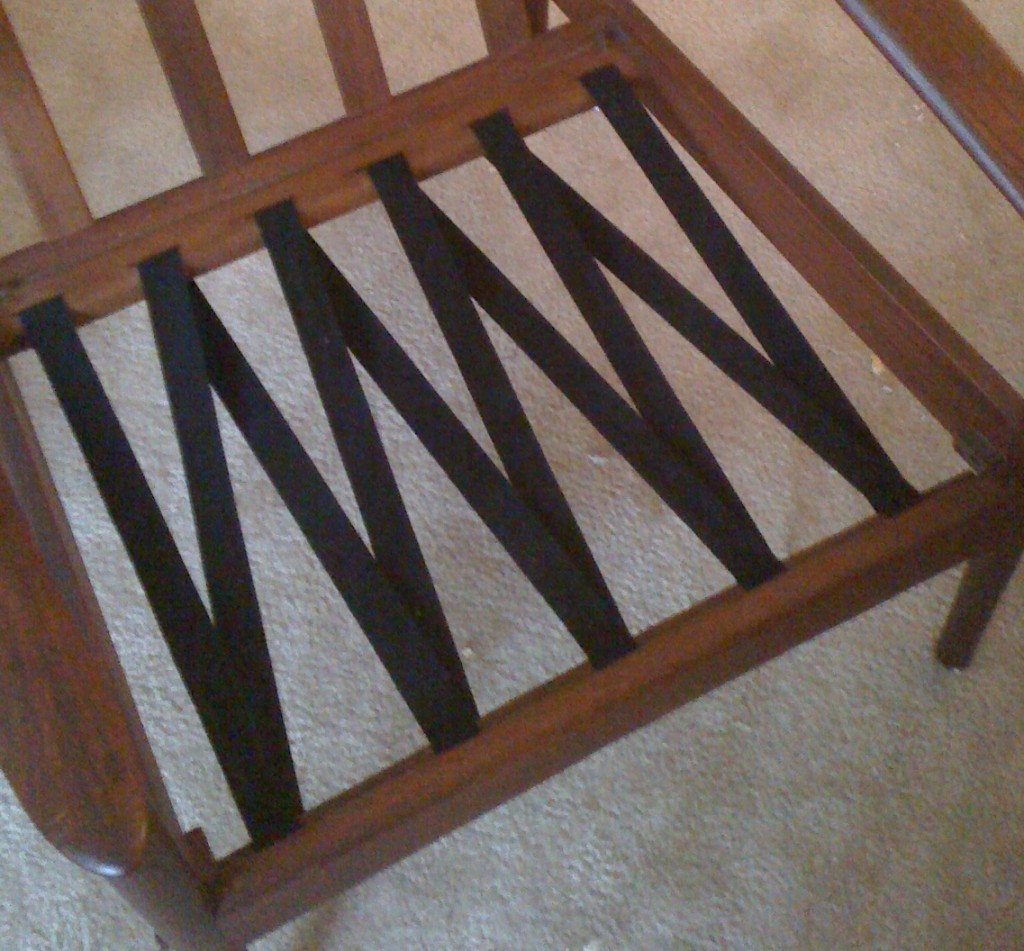 Since the vinyl webbing is not available, I used heavy cotton webbing. I realized after this photo was taken that the front rail had been put on upside down a long time ago, so that was redone before proceeding. (The chair is of knock-down construction so this wasn’t too hard.)
Since the vinyl webbing is not available, I used heavy cotton webbing. I realized after this photo was taken that the front rail had been put on upside down a long time ago, so that was redone before proceeding. (The chair is of knock-down construction so this wasn’t too hard.)
The finished chair with sculpted foam cushions covered in a very soft nubby gray fabric. It really gives an understated elegance to this classic Danish chair.
This fabric is bulky so I did top-stitched seams instead of the usual welt. This is a nicer finish on the rounded edges anyway.

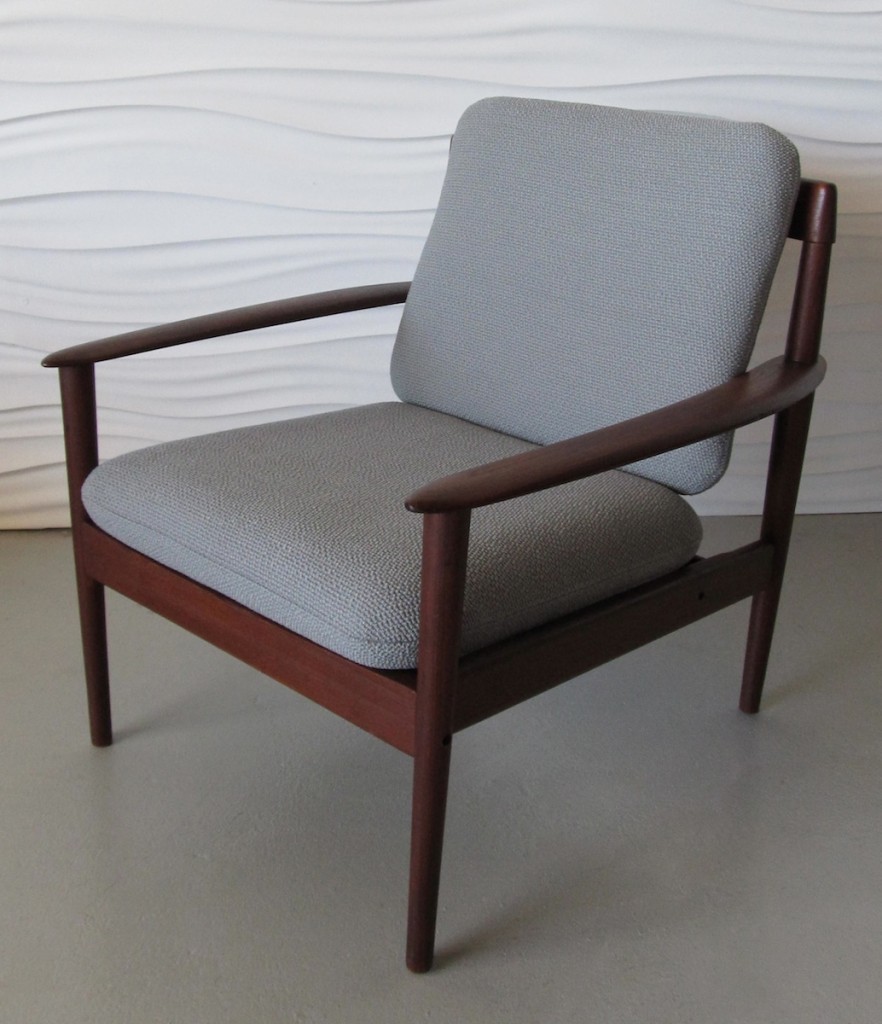
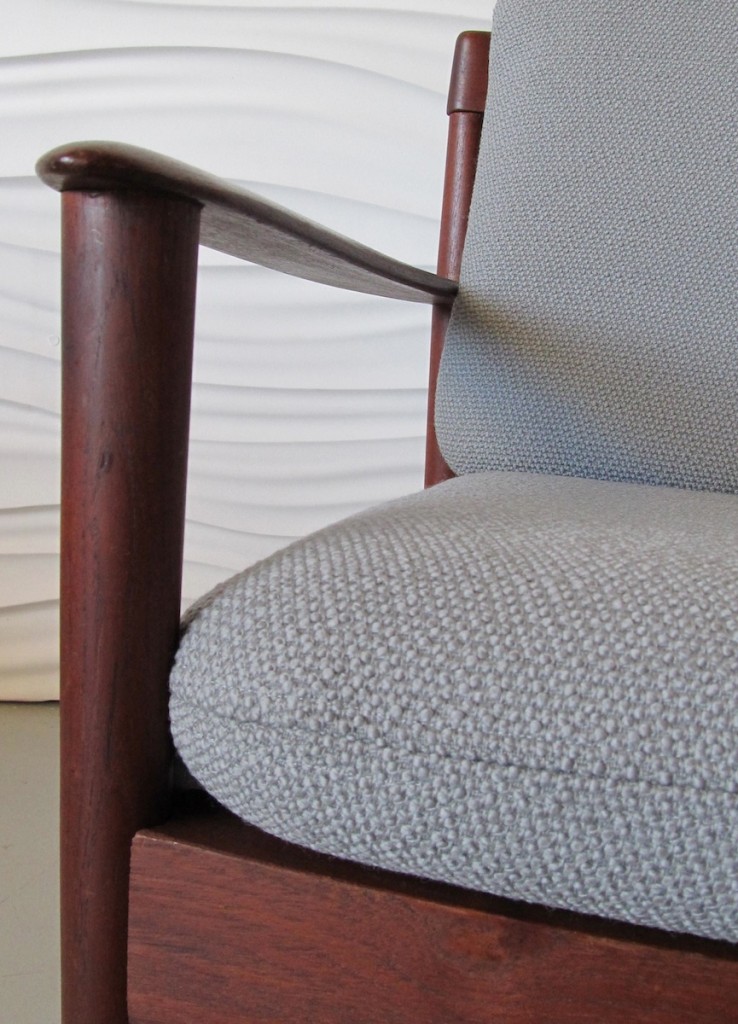

16 Responses to Grete Jalk teak lounge chair